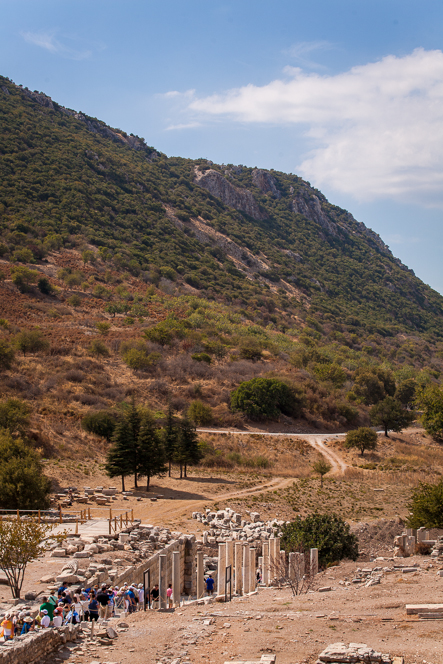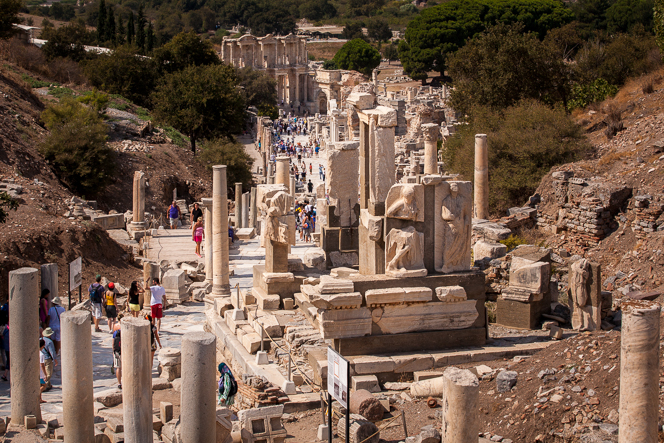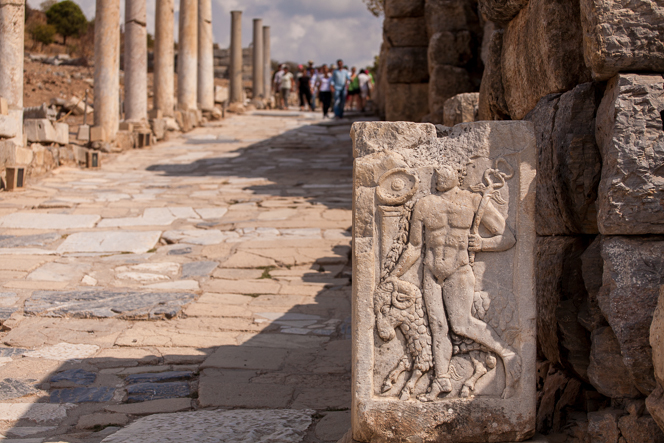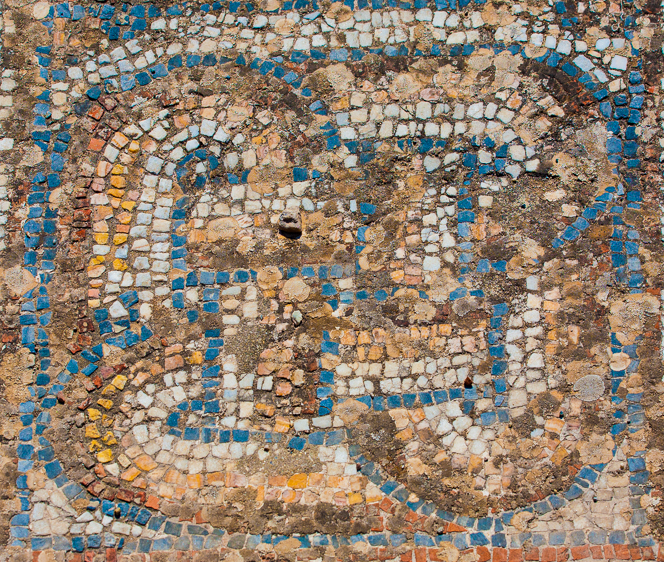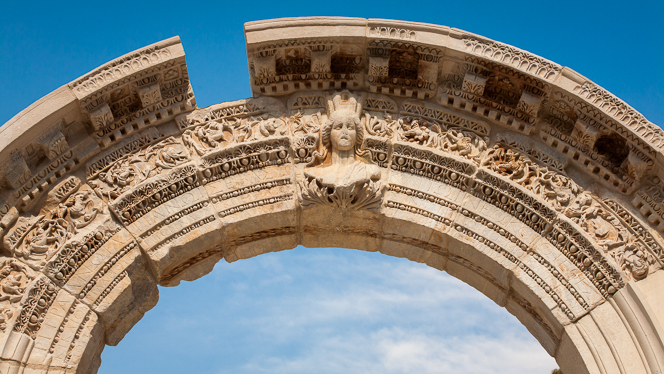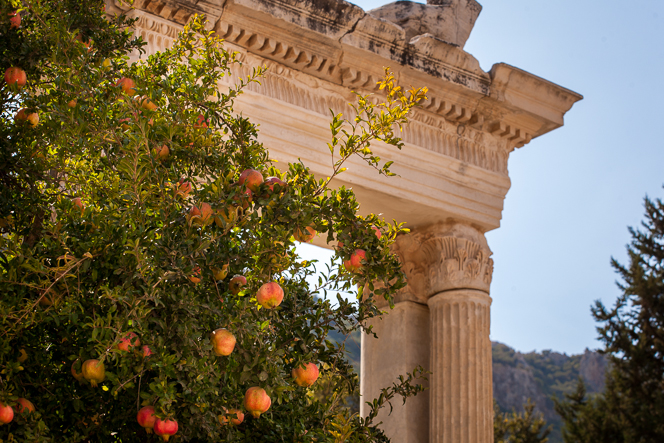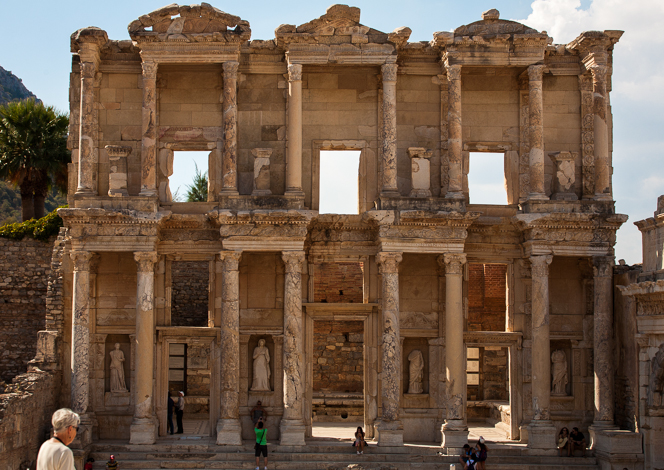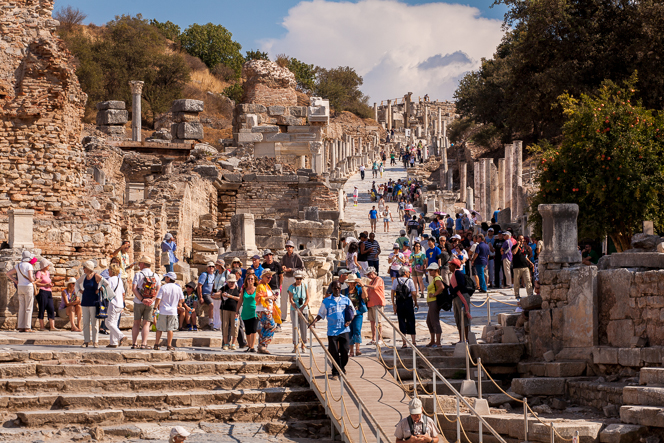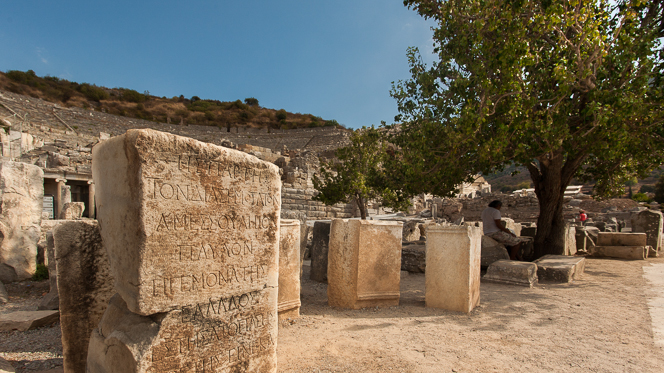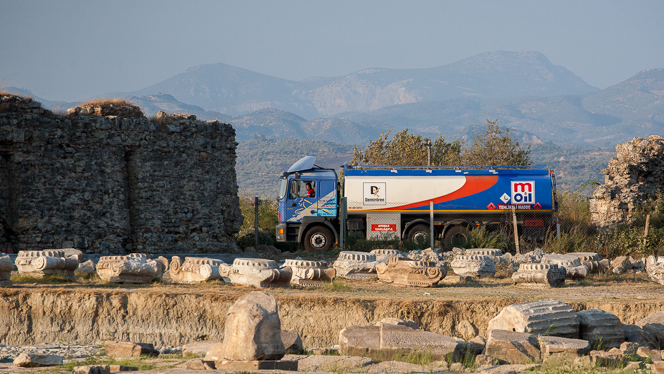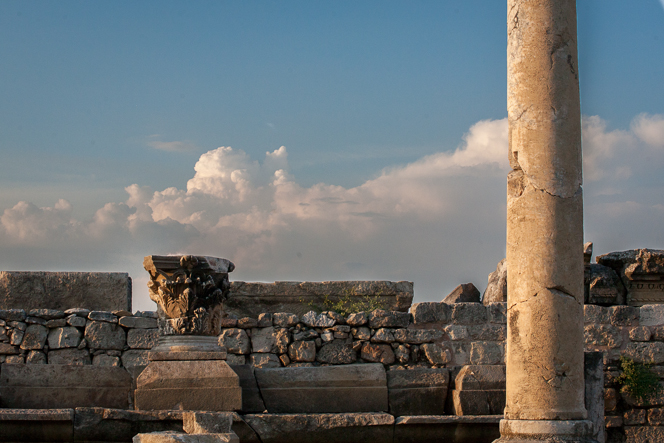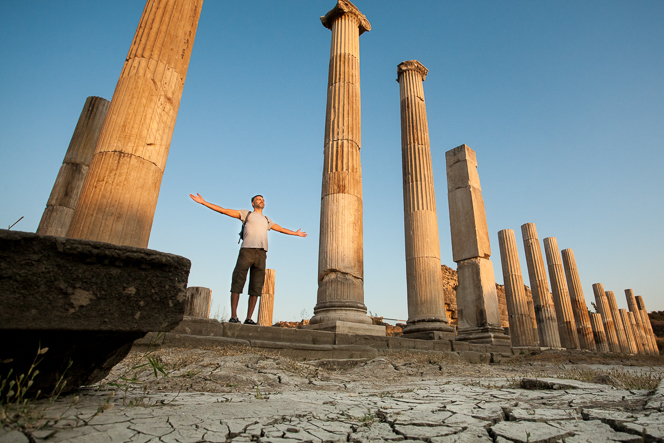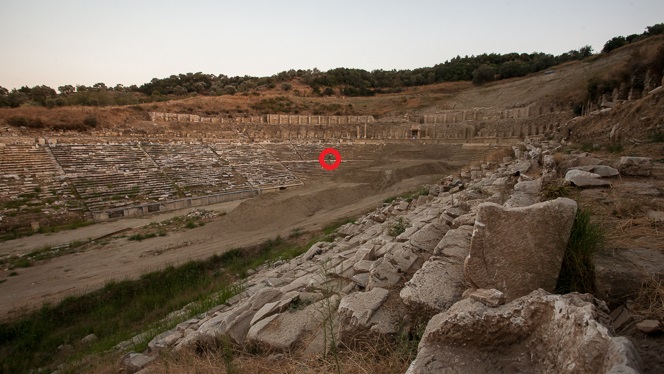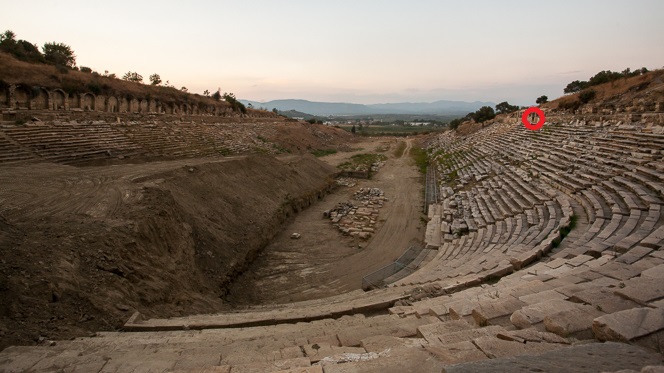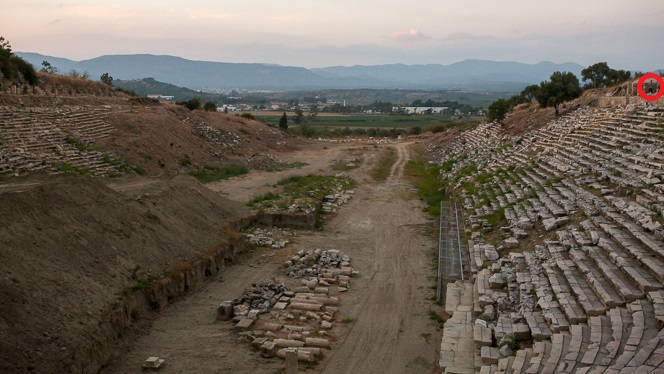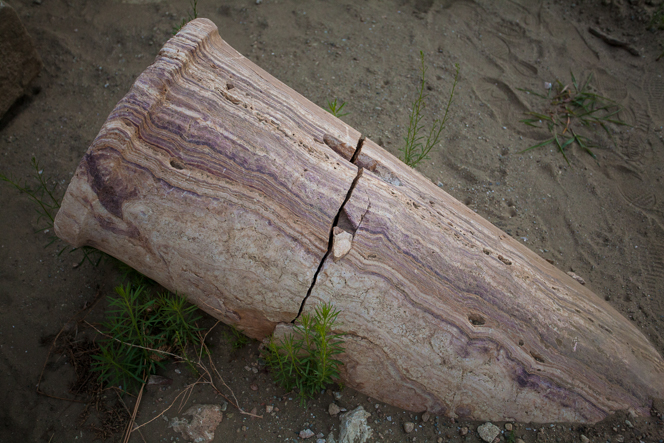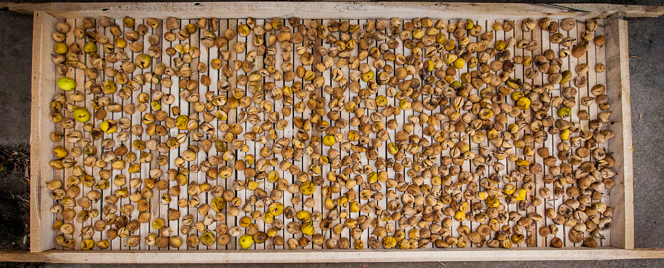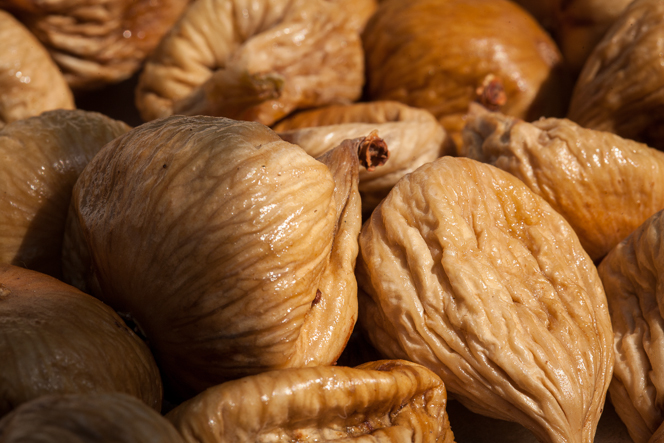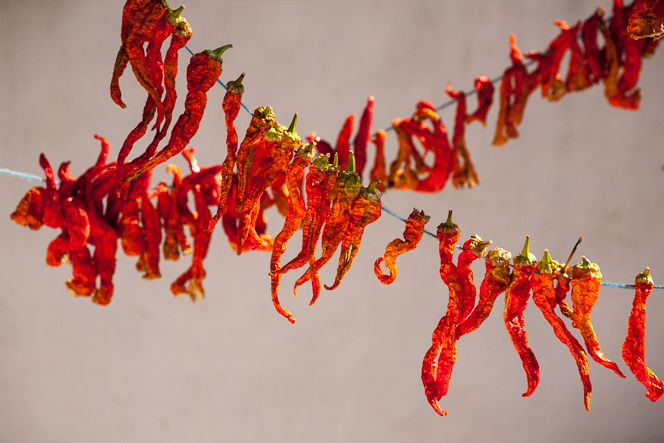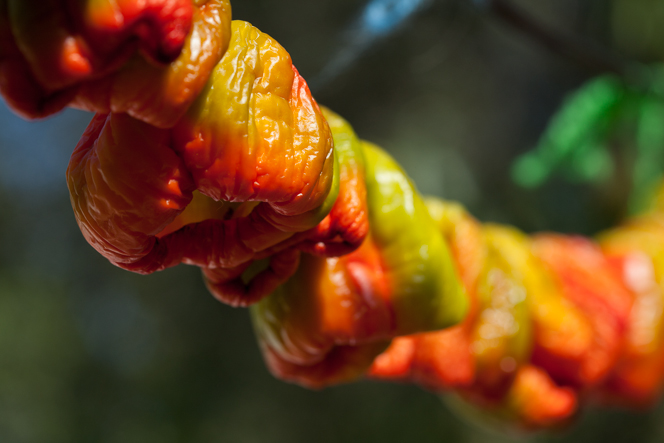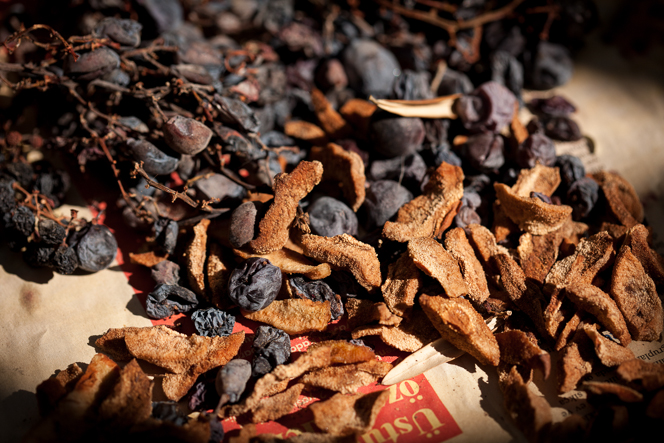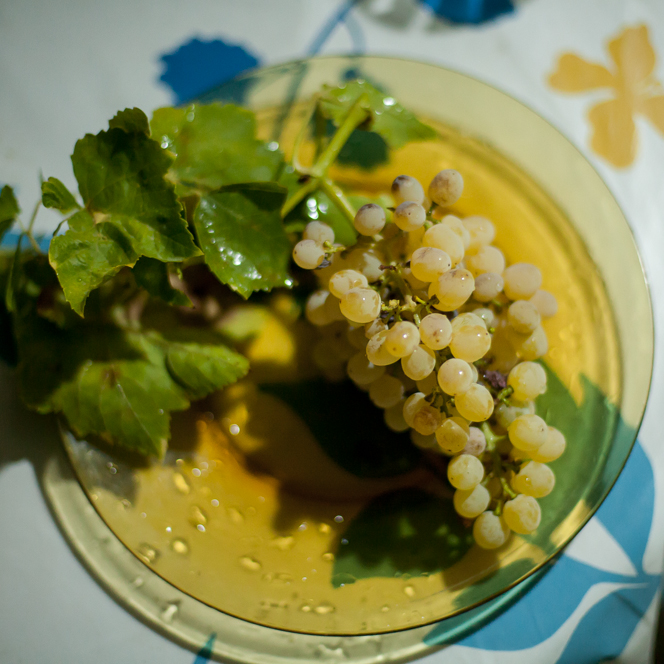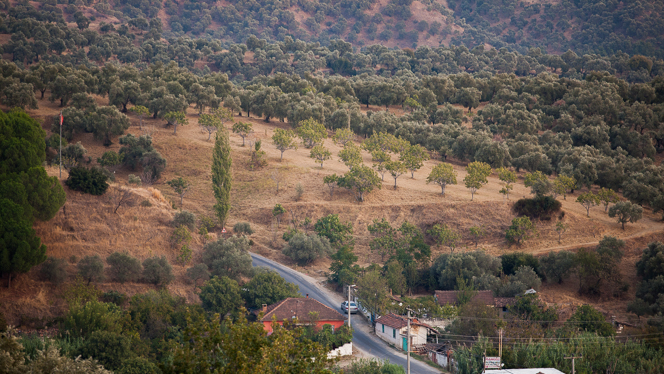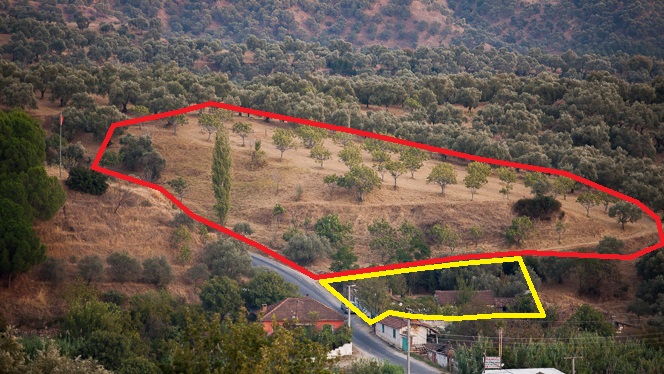The courtyard here is our living room: we have three rooms and a kitchen, but the place to sit, relax, and eat is usually outside. (At least while the good weather lasts!) We got a lot of use out of our plastic camping chairs, but eventually we wanted something more comfortable. So we decided to build a sedir: a kind of low, long, wooden Turkish sofa. We put our ideas into Sketchup and then bought some wood.
Construction took a few days and lots of cups of tea. Jason worked very hard and luckily my mum was around to help. I was responsible for photography but that means you can’t see how much I was helping too. :)

Working into the night: Jason was determined to finish it before dawn. Luckily we have tolerant neighbours.
After a late night finishing the construction, we sanded everything down and used our new compressed-air spray gun to stain the sofa. I bought some blue and white fabric, and found a local tailor who specializes in cotton-filled cushions and duvets. He put together some very nice fat stuffed cushions within a few days.

Spray gun time. Jason says everyone should own an air compressor. I am not sure whether I agree with him.
The whole thing cost us 200 lira for timber and screws, 30 lira for a tin of wood stain, 75 lira for fabric, and 500 lira for the tailor to make the cushions. That’s a total of 805 lira or £226. Not bad! (Jason wants me to add that these calculations assume he works for free.)
We also felt bad that our dog Zeytin was still living in a cardboard box as winter approaches. So we knocked together a little dog house for her. She is again pleased with her new accommodation.
Finally, you are never very far from animal-related drama in a small village in Turkey. The other day we came home to find four beautiful puppies had been abandoned on the road near our house. We had to do something for them: I think the pictures show how impossible it would have been to leave them out in the street. It was a long night of feeding them milk and cleaning up their pee and cuddling them.
Unfortunately we just couldn’t keep them because we already have five cats and a dog. So we made some phone calls to animal charities in the area, and luckily we found there’s an excellent dog shelter in Ayd?n run by the local council. They assured us that all four puppies would have no problem finding a new home, so that made us feel a bit better about the sad moment of having to part with them.










